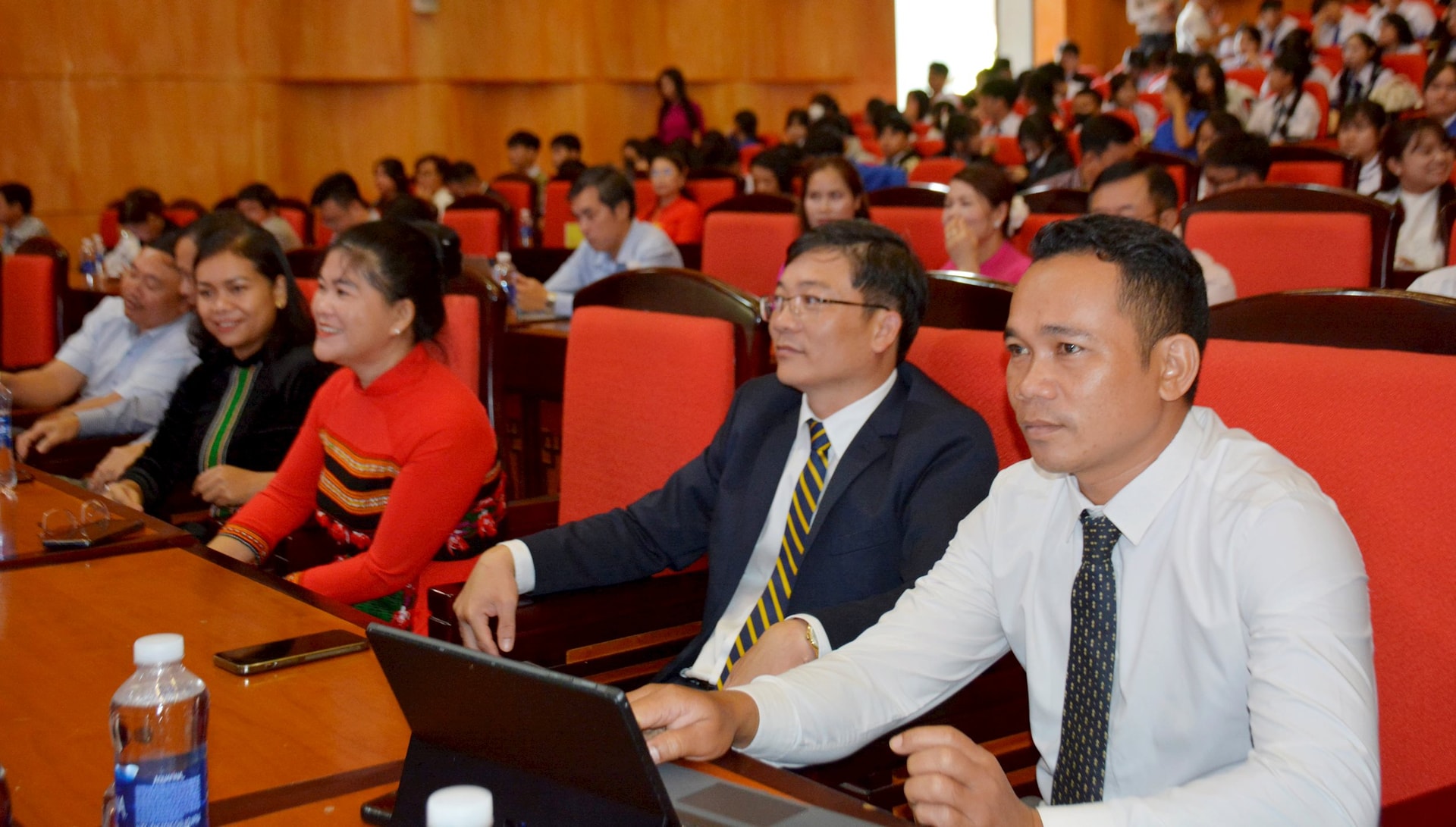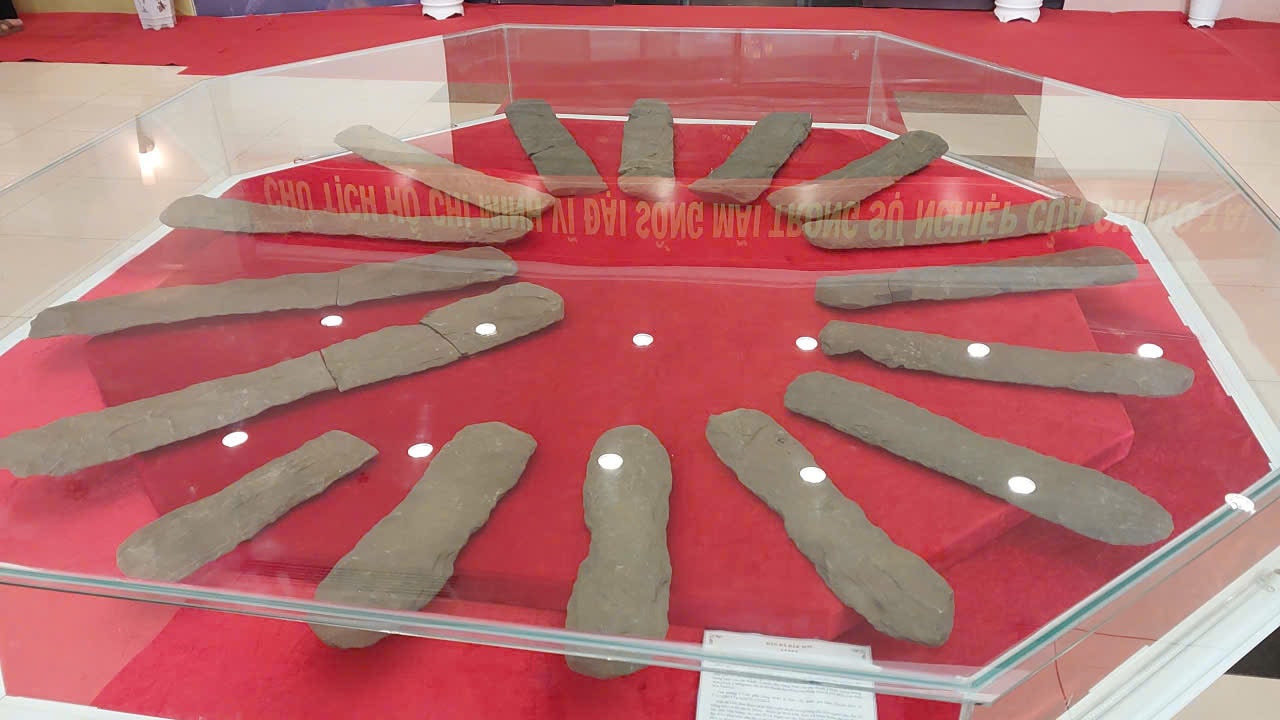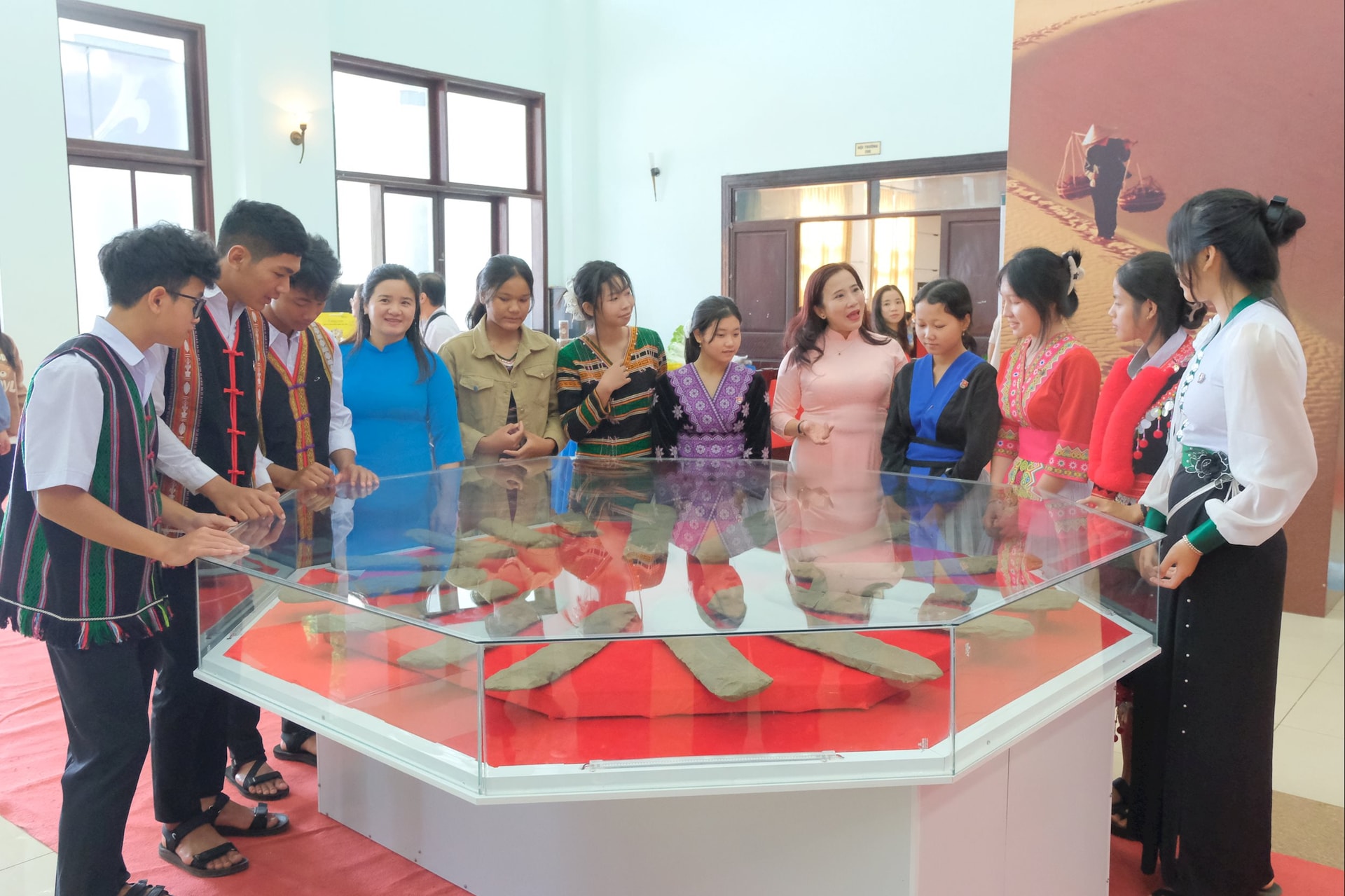.jpg)
On September 12, at Dak Nong Conference Center, Dong Gia Nghia Ward, Lam Dong Provincial People's Committee held a ceremony to announce the Prime Minister's Decision to recognize the Dak Son Lithophone as a National Treasure; receive the Certificate of ranking as a National Monument for the scenic spots of Cave C3-C4, Cave 7, Cave 8; and announce the List of National Intangible Cultural Heritage of the Tam Blang M'Prang Bon Festival (Rung Bon worshiping and tree planting ceremony of the M'nong people).
.jpg)
Attending the Conference, on the Central leadership side, there were comrades: Pham Dinh Phong, Deputy Director of the Department of Cultural Heritage; Tran Tan Van, senior expert of the Global Geoparks Network; Do Thi Yen Ngoc, Director of the Center for Applied Geological and Environmental Research; Bui Van Liem, Editor-in-Chief, Vice President of the Vietnam Archaeological Association, members of the National Cultural Heritage Council; leaders of institutes...
.jpg)
On the Lam Dong side, there were comrades: Ngo Thanh Danh, National Assembly member of Lam Dong province, former Secretary of the Provincial Party Committee, former Head of the National Assembly Delegation of Dak Nong province (old); Ha Thi Hanh, member of the Provincial Party Standing Committee, Vice Chairman of the Provincial Vietnam Fatherland Front Committee; Duong Khac Mai, Provincial Party Committee member, Deputy Head of the National Assembly Delegation of Lam Dong province; Dinh Van Tuan, Provincial Party Committee member, Vice Chairman of the Provincial People's Committee.

Dak Son lithophone was recognized as a National Treasure by the Prime Minister under Decision No. 1712/QD-TTg dated December 31, 2024. Dak Son lithophone is made from Rhyolite (metamorphosed schist). The raw stone used to make lithophones is often discovered and researched in the Central Highlands and Southeast regions.
The lithophone dates back about 3,500 - 3,000 years ago, and consists of 16 bars; of which, there are 11 intact bars, 5 broken bars (4 broken bars and 1 broken bar, can be reassembled); divided into two groups of types: the middle one (the concave side) and the rectangular one (the two parallel sides).

The average length of the bars is: 57 beng; the average width of the bars: 12.4cm; the average wire of the bars: 3.0cm; the average weight: 3,940grams; the sound frequency fluctuates greatly (the lowest is 191.9Hz, the highest is 4,500Hz).
.jpg)
Dak Son lithophone was discovered by chance underground (when people were digging holes to plant pepper) at a depth of 50 - 90cm in Dak Son village, Nam Xuan commune, Krong No district, Dak Nong province (old) in 2014.
Immediately after that, the Provincial Museum conducted a survey of the location where the Lithophone was discovered and coordinated with the Southern Institute of Social Sciences (Ho Chi Minh City) to conduct archaeological appraisal and measure sound frequency (in 2016). At the same time, they conducted exploration and excavation of the relic to determine the connection of the Lithophone with the Dak Son relic (in 2017).

Currently, Dak Son lithophone is being kept, protected and well preserved according to procedures and regulations at Dak Nong Museum.
Source: https://baolamdong.vn/cong-nhan-bao-vat-quoc-gia-dan-da-dak-son-391109.html






![[Photo] Prime Minister Pham Minh Chinh attends the groundbreaking ceremony of two key projects in Hai Phong city](https://vphoto.vietnam.vn/thumb/1200x675/vietnam/resource/IMAGE/2025/9/27/6adba56d5d94403093a074ac6496ec9d)






























































































Comment (0)